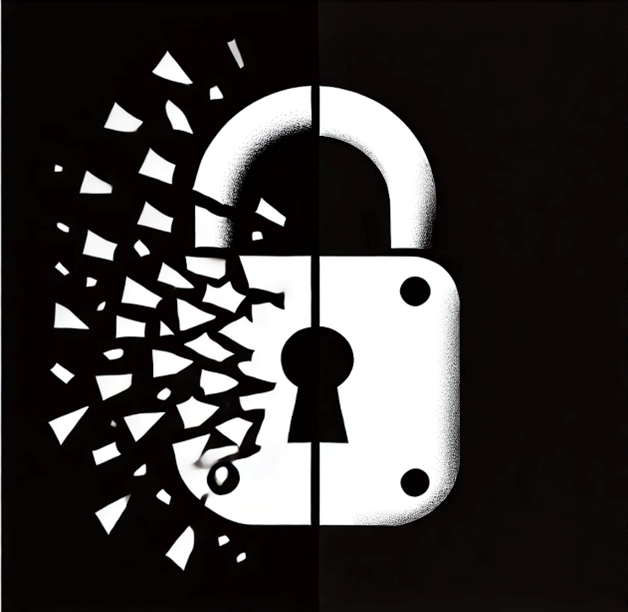 Sumanth Kakaraparthi | VP Product Management
More About This Author >
Sumanth Kakaraparthi | VP Product Management
More About This Author >
 Sumanth Kakaraparthi | VP Product Management
More About This Author >
Sumanth Kakaraparthi | VP Product Management
More About This Author >
Imagine a future where a powerful quantum computer cracks the codes protecting bank transactions, secure exchanges, and sensitive documents like medical records in minutes. This future is no longer science fiction—quantum computing is on the rise, and its latest milestone is the Microsoft Majorana 1 chip. Leveraging exotic Majorana fermions, this innovation promises fault-tolerant, highly scalable quantum systems, propelling us closer to a reality where asymmetric security protocols (RSA and Elliptic Curve Cryptography (ECC) could become obsolete.
For CISOs and data security leaders, the stakes have never been higher. Once thought unbreakable, traditional encryption faces an existential threat from quantum processors that can theoretically solve complex equations in mere moments. The question isn’t if quantum computing will arrive—it’s how soon and whether your organization will be ready.

Why Asymmetric Security Protocols Are Vulnerable
The Crux of Classical Encryption
Quantum computing poses a significant threat to many widely used asymmetric cryptographic algorithms, primarily due to Shor's algorithm, which efficiently solves the mathematical problems underlying their security. This means that widely used public-key algorithms such as:
- RSA Encryption relies on multiplying two large prime numbers, an operation easy to perform but extremely difficult to reverse using classical computers.
- ECC (Elliptic Curve Cryptography) offers a similar challenge, using complex mathematical structures that resist brute-force attempts.
The Quantum Advantage: How Qubits Outpace Classical Encryption
Quantum computing’s disruptive power arises from quantum parallelism: qubits can exist in multiple states simultaneously, enabling algorithms like Shor’s Algorithm to factor large integers exponentially faster than traditional computers. For RSA and ECC, it’s as if an army of cryptanalysts tries every possible key combination all at once.
Microsoft’s Majorana 1 Chip: A Quantum Leap Forward
Majorana Fermions Explained
Majorana fermions are special particles that act as their antiparticles—think of them as a single entity and its mirror image rolled into one. By tapping into this property, Microsoft’s Majorana 1 chip can create topological qubits, which are far more resistant to the random errors (decoherence) that typically plague quantum systems.
Why This Matters
- Fault Tolerance: Lower error rates mean researchers and engineers can build powerful, large-scale quantum computers sooner.
- Scalability: Making millions of qubits feasible pushes us closer to genuine quantum supremacy—where quantum machines outperform classical ones.
- Practical Applications: From drug discovery to material science, stable quantum hardware could unlock breakthroughs well beyond today’s capabilities.
For security professionals, the Majorana 1 announcement underscores how quantum breakthroughs are happening faster than many anticipated, bringing the RSA/ECC doomsday scenario from theoretical to inevitable.
The Looming Quantum Threat: Data Harvested Today, Decrypted Tomorrow:
The “harvest now, decrypt later” tactic poses one of the most urgent challenges in cybersecurity. Adversaries are collecting encrypted data—ranging from sensitive transactions and patient records to government communications—and storing it for future decryption. Once quantum computers are available they can retroactively unlock vast amounts of sensitive information once thought secure.
Industries on High Alert
- Financial Services: Transactions, trading algorithms, and high-value customer data.
- Healthcare: Patient records, genomic data, and insurance files.
- Government & Defence: Classified intel and critical infrastructure controls.
- E-Commerce & Tech: Proprietary codebases and user credentials.
Monetary and reputational fallout could easily surpass the $4.45 million average breach cost reported by IBM in 2023. For organizations that can’t afford quantum-scale breaches, failing to prepare now is simply not an option.
A CISO’s Quantum-Safe Roadmap
Conduct a Post-Quantum Risk Assessment
- Conduct a Cryptographic Inventory: Identify all instances where asymmetric algorithms are used, including TLS and cryptographic protocols, and prioritize protecting high-value data that requires long-term security.
- Ensure Crypto-Agility: Use modular frameworks and update HSMs to support rapid algorithm swaps as standards evolve.
- Adopt Post-Quantum Algorithms: Implement NIST-recommended crypto algorithms (ML-KEM, ML-DSA, SLH-DSA) with hybrid encryption to future-proof security.
- Pilot Before Scaling: Test in a controlled environment to validate performance, then expand organization wide.
- Continuous Monitoring & Training: Track quantum breakthroughs and keep teams updated on best practices and evolving threats.
Why Crypto Agility Matters:
Crypto agility enables organizations to adapt rapidly to new quantum-safe algorithms with minimal disruption and ongoing regulatory compliance.
- Adopt Modular Cryptographic Frameworks: Decouple crypto logic so you can update algorithms via policies rather than full code rewrites.
- Upgrade Hardware Security Modules (HSMs): Choose HSMs supporting larger keys and post-quantum protocols to ensure scalable adoption of new standards.
- Automate Testing & Validation: Incorporate cryptographic updates into CI pipelines, verifying performance and compatibility before production rollout.
- Plan for Key Lifecycle Management: Use key rotation to phase out RSA/ECC and introduce quantum-safe keys as threats evolve.
Why Act Now?
Accelerating Timelines
Migrating to quantum-safe cryptography is a multi-year endeavor involving audits, architecture changes, and workforce training. Experts once projected 5–10 years before quantum computers could break RSA. With Microsoft’s Majorana 1, these timelines may shrink dramatically to a few years.
Future-Proof Your Brand
Beyond technical resilience, demonstrating proactive quantum readiness builds trust among customers, partners, and investors. In a landscape where data breaches make daily headlines, quantum-safe practices can differentiate you as a forward-thinking organization.
The Clock Is Ticking
Microsoft’s Majorana 1 chip is the latest indicator that quantum computing is racing toward mainstream adoption. CISOs and data security teams must adapt now to prevent classical encryption methods from falling behind. By:
1. Auditing Cryptographic Algorithms
2. Deploying Post-Quantum Solutions
3. Investing in Crypto-Agile Architectures
4. Monitoring Rapid Quantum Advancements
You can future-proof your organization’s data and infrastructure. The quantum era is no longer a distant possibility—it’s an emerging reality. The time to protect your organization’s most valuable assets is now.
Next Steps
- Learn more about Post-Quantum Cryptographic Solutions from Thales
- Take the free risk assessment to check your organization's quantum risk level
- Kick off your post-Quantum readiness with the PQC Starter Kit